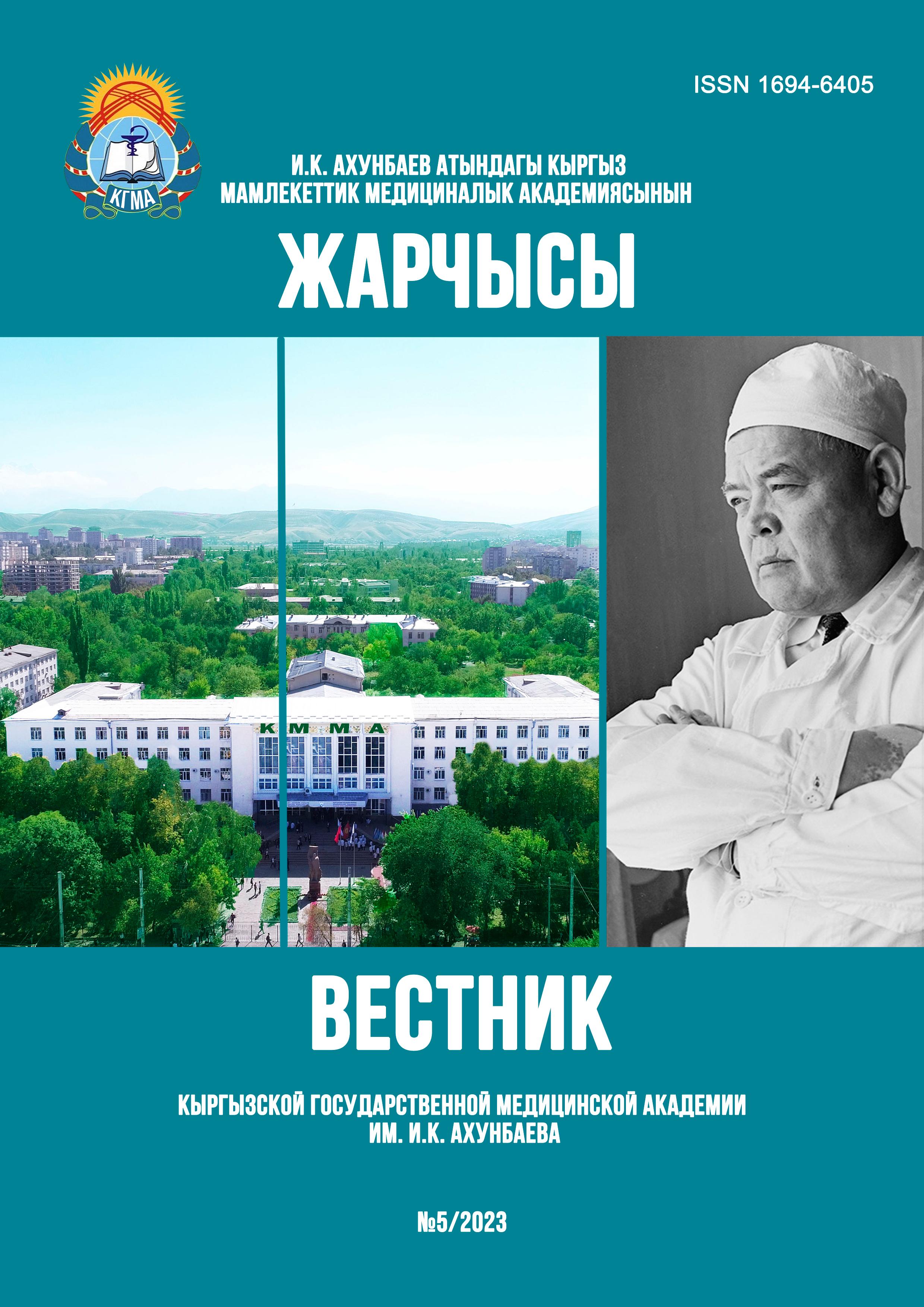RESULTS OF APPENDICULAR PERITONITIS TREATMENT IN CHILDREN WITH ABDOMINAL CAVITY DRAINAGE AND PH ENVIRONMENT CORRECTION
DOI:
https://doi.org/10.54890/1694-6405_2023_5_110Abstract
In the article, the authors note an increase in the frequency of complications after open methods of appendectomy, but at the same time, open methods of treating complicated forms of appendicitis in children remain relevant today, since in many ways the outcome of treatment of patients with appendicitis complicated by peritonitis depends on adequate surgical tactics and reliable eliminating the source of peritonitis. Access, sanitation and drainage of the abdominal cavity, as well as decompression of the small intestine for diffuse appendiceal peritonitis remains the method of choice for many operating surgeons. Biochemical blood parameters in patients with appendiceal peritonitis after surgery are uninformative and do not provide a clear idea of the severity and dynamics of progression of the pathological process. Nonspecific CRP is the most highly sensitive indicator of inflammatory activity. A study was carried out of the pH environment of the abdominal cavity during and after open appendectomy and complex treatment of peritonitis, which included drainage of the abdominal cavity through access in the right iliac region with glove drainage with the introduction of a 0.5% solution of salicylic acid in a volume of 1 ml on the second day. When analyzing the results of complex treatment of patients with acute appendicitis complicated by appendiceal peritonitis of various forms with the use of salicylic acid 0.5%, a change in the pH of the medium towards normalization was noted from the 5th day, which also correlated with general clinical signs of improvement in the patient’s condition. Complex treatment of appendiceal peritonitis with the use of salicylic acid improves the final results in the early and late postoperative period in children by 4.3%.
Keywords:
acute appendicular, peritonitis, glove drainage, abdominal cavity, microflora, bacterial culture, salicylic acid, pH-scale, children.References
1. Хаджибаев А.М., Ризаев К.С., Арипов У.Р. Применение эндовидеохирургии в диагностике и лечении больных с осложнёнными формами острого аппендицита. Эндоскопическая хирургия. 2014; 20(5):17-20.
2. Савельев В.С., Гельфанд Б.Р., ред. Абдоминальная хирургическая инфекция: российские национальные рекомендации. М.:Боргес; 2011. 98 с.
3. Coccolini F, Trana C, Sartelli M, Catena F, Di Saverio S, Manfredi R, et al. Laparoscopic management of intra-abdominal infections: systematic review of the literature. World J Gastrointest Surg. 2015;7(8):160-9. https://doi.org/10.4240/ wjgs.v7.i8.160
4. Di Saverio S, Berindelli A, Kelly MD, Catena F, Weber DG, Sartelli M, et al. WSES Jerusalem guidelines for diagnosis and treatmen of acute appendicitis. World J Emerg Surg. 2016;11:34. https://doi.org/10.1186/s13017-016-0090-5
5. Maxfild MW, Schuster KM, Bokhari J, McGillicuddy EA, Davis RA. Predictive factors for failure of nonoperative management in perforated appendicitis. J Trauma Acute Care Surg. 2014;76(4):976-81. https://doi.org/10.1097 TA.0000000000000187
6. Sibia US, Onayemi AO, Turcotte JJ, Klune JR, Wormuth J, Buckley BM. Bundled payments for appendectomy: a model of financial implications to institutions. J Gastrointest Surg. 2020;24:643-9. https://doi.org/10.1007s11605-019-04181-5
7. Самсонов В.Т., Гуляев А.А., Ярцев П.А., Македонская Т.П. Возможности видеолапароскопии в диагностике и лечении больных острым аппендицитом, осложнённым перитонитом. Эндоскопическая хирургия. 2016;22(4);14-7. https://doi.org/10.17116/endoskop201622414-17
8. Ярцев П.А., Ермолова А.С., Пахомова Г.В., Гуляев А.А., Левитский В.Д. Лапароскопия в диагностике и лечении острого аппендицита. Хирургия. Журнал им. Н.И. Пирогова. 2010;4:21-5.







